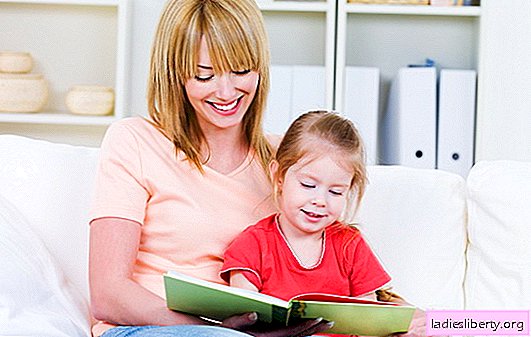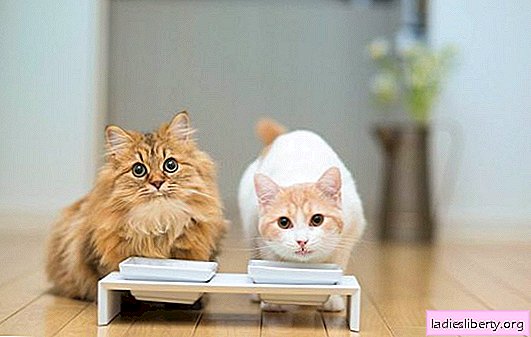
How to teach a child to read syllables at home, when there is no way to send him to kindergarten or other educational institutions for kids?
This question is relevant for parents.
Every year the school curriculum becomes more complicated, when entering the first grade, the child should already be able to add prime numbers, know the alphabet and read by syllables.
If these skills are not available, the child will not be able to learn the basic program and will feel impaired, inferior, which will negatively affect the formation of the psyche.
How to teach a child to read syllables at home and when to start learning
To teach a child to read words on their own in syllables is not as difficult as it seems. The home environment is comfortable for him, the child feels more confident. Now in bookstores you can find a huge number of all kinds of manuals and books for kids, on which you can learn basic knowledge.
Of course, you need to start with the alphabet. There are also methods for remembering letters. Rough Montessori letters and Zaitsev’s cubes are in great demand. If they are not interesting to the child, you can pick up something else, the choice is huge. It is possible that the baby is susceptible to music and it’s best to remember the alphabet with music boards or other toys.
The consequences of learning too early
It is important to understand not only how to teach a child to read syllables at home, but at what age you can start to do it. Every parent wants his baby to be the smartest and most educated. There should be a measure in everything. Ophthalmologists and psychologists strongly oppose education too early. It is believed that the child is consciously able to perceive information no earlier than from the age of 5 years. Until this age, any educational exercises should only be in a playful way. It is impossible to burden the psyche too early with responsibility.
Consequences of learning attempts too early:
• neurosis;
• problems with sociability, isolation;
• nerve tics;
• stuttering, groundless excitement;
• obsessive fear.
You can’t try to make a genius out of your child. It is much more important to maintain his psycho-emotional state and to educate a worthy, sociable and confident person. Each kid is individual. Knowledge is easy for some, while others take a little longer. In any case, parents should not forget that this is a small child who, first of all, needs love and support.
How to understand that a child is ready to learn
Signs that help determine the readiness of the child to learn to read syllables and learn skills:
• the child knows how to coordinate well in space;
• the child distinguishes sounds in words, consciously tries to pronounce them correctly;
• the baby clearly shapes his desires into logical sentences;
• lack of speech therapy problems with speech;
• independent craving for knowledge.
Readiness Readiness Exercise
The children's brain must be able to be aware of what they saw. The easiest way to get cards with the image of letters and words on these letters. For example, the letter "A" and a watermelon is drawn on the card. The child needs not only to explain what kind of berry it is, but also to clarify that its name begins with the letter "A".
When the kid, having seen the card, will say “A” - watermelon, “B” - drum and so on, that means he is ready to learn how to read by syllables.
How to teach a child to read syllables at home: an effective technique
Teachers and psychologists have developed methodological rules, following which parents can teach their child to quickly and confidently read in syllables. The main thing is to follow the sequence.
1. The alphabet. First of all, the baby must learn the letters, one after another.
2. At the second stage, it is important to teach how to pronounce syllables consisting of two letters.
3. You can proceed to the pronunciation of syllables consisting of three letters.
4. Now the child is ready to learn how to independently combine syllables into simple words.
5. The last stage is the combination of syllables into complex words and the first reading attempts. Parents are already at the finish line.
Important! The training process should be easy, without stress. Doing this is in a playful way. If something doesn’t work for the child, you can’t scold the baby, otherwise he will lose his desire to learn new information. Returning his interest will be very difficult, even at school.
How to teach a child to read syllables at home: combine letters into syllables
The syllable consists of consonants and vowels. Initially, the baby must learn to pronounce vowels. There are not many of them, so it will be easier for the child. After that, you can proceed to the consonants. Learning begins with the most common sounds - this is "m", "p", "b".
Parents should not, when learning, combine consonants with sounds. For example, you cannot say pe, you need to pronounce p. Let the child say exactly “p”, then add the vowel “a” and get the syllable - “pa”.
It will be a great pleasure for the baby when he can independently assemble his first word from the cubes - “mom” or “dad”.
Promotion for results
The kid must understand that his achievements are bearing fruit. It is very important for parents to encourage and grasp the child, only this way he will have a craving for knowledge.
For example, when the baby independently piled the first word out of cubes, take it to the playground, where he had not yet been, or buy something tasty. The child will like that he was praised, he will try to add new words - more complex, with different syllables.
Reading a book together
When the development of the literacy on cubes is behind, you can proceed to the joint reading of books. Most importantly, the chosen book should be bright, have many pictures and large letters, which will allow the little child not to strain his eyes.
It is very important at the first stage to ask the baby to try to independently find the familiar syllables "ma", "pa", "ba" and others.
Read together, so the children are much more interesting and they feel the support of their parents. So that the baby does not lose the line, you need to teach him to follow her with a finger. So the parents will see whether their child is reading correctly and, if necessary, correct the mistake.
Important! You need to purchase books with different fonts. It happens that a child may not recognize a letter if it is written differently. It is very important to teach him to recognize letters in different fonts and not to put it off.
How to teach a child to read syllables at home: useful tips
1. When purchasing educational books for babies, you should pay attention to various techniques. Versatile development will help the child more easily perceive new information.
2. If the parents have clearly decided to teach their child to read, this needs to be done every day. Even if there is a catastrophic lack of time, all the same in the morning or before bedtime you need to try to allocate 15-20 minutes.
3. Before giving the child new information, it is necessary to repeat the material already covered. This will be a kind of exercise for the brain.
4. Children's attention is very unstable, after 20 minutes of training the brain switches from exercises to extraneous things. You need to try to meet this time.
5. Even the smallest achievements of the child must be praised. If this is insignificant for parents, for a baby a new skill becomes a real achievement. The praise of the child will lead to the fact that he will even more strive for new discoveries for himself.
To make it easier for a small student to remember all the information received, it is recommended to combine theory with practice. For example, parents have just learned the letter "A" with their child. You can try to ask the baby while walking or doing household chores to find this letter around him. It can be stands, books, inscriptions on shops and much more. Such a kind of gymnastics will allow to consolidate the information received and to better absorb it.
Understanding how to teach a child to read syllables at home is not difficult. It’s much harder to be patient and give the exercises time every day, at least 10-15 minutes. The efforts of parents will not be in vain. When the child goes to first grade, he will be proud that he already knows how to read.











